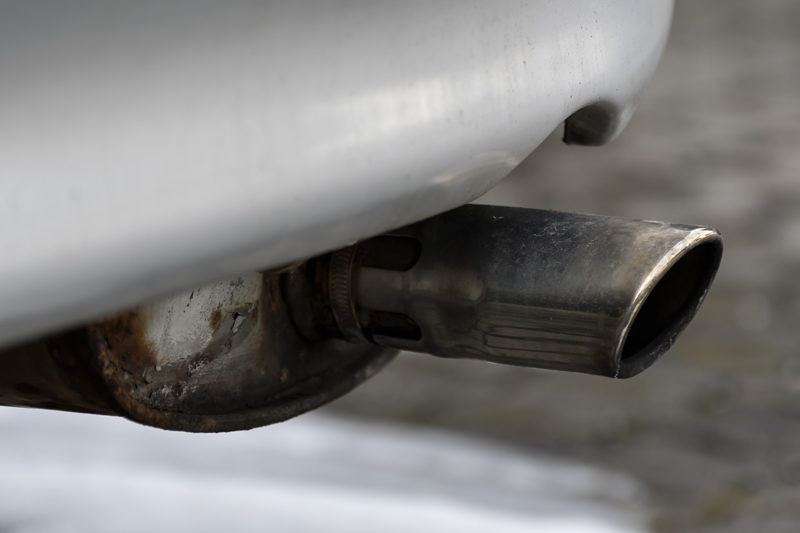Using two examples where customers complained of engine troubles, Josh Jones explains why the recent changes to MOT testing should be welcomed by garages.
With the new MOT test procedures now in place, I have seen a rise in requests for help concerning fuel system faults following MOT failure. It seems that some underlying emissions control and exhaust gas treatment faults, which would have previously gone undetected, are now being highlighted during more stringent emissions testing. For us as technicians, I think the changes are welcome news, as it will force people to make sure their vehicle’s powertrain is operating somewhere near correctly.
Having been a roadside technician for some years, during the period when diesel engines seemed to become more popular, the amount of cars I attended with serious running issues left me dumbstruck. Broken swirl flap mechanisms, loose injectors with balls of solid soot hanging off them, blanked off EGR valves, missing DPFs; you name it, I’ve seen it. Did many of these faults result in MOT failure or even rectification at point of service? Absolutely not.
There is a massive opportunity here for independent repairers to keep their customers’ cars running correctly for their entire lifespan, and at the moment, this is being missed out on.
I think more stringent emissions testing is the first step towards highlighting some of the issues I have mentioned, hopefully before they result in catastrophic engine failure and a massive bill for the vehicle owner. In almost all cases where I have highlighted and explained faults to customers during breakdown attendance, the owners were invariably upset that the issue had not been pointed out during the vehicle’s last MOT or service. People are generally more than prepared to spend money on their car’s wellbeing when a comprehensive explanation for the cost is given by an informed person, hence the importance of up- to-date knowledge and training.
In the past month, I have experienced a couple of situations where a diesel engine fault has ended up being repaired as a result of a more thorough examination of the fuel system as a whole.
A 2010 Vauxhall Astra 1.9 CDTi with rough running issues was recently bought into a local independent garage for a routine service. During the service, various new parts were fitted, including some new suspension components, two tyres – the usual stuff really. It had also been returned to its owner with a small list of recommended replacements that, on this occasion, the customer had declined due to cost. I found it interesting to hear that the customer had highlighted that they did not feel the engine was running quite right.
The customer was right in this case, because this thing was basically running on three cylinders. As I have seen many times before, the swirl flap mechanism that is used to control the dynamics of the charge intake was completely broken up, rendering it useless. No wonder the car didn’t run right, with half its inlet ports blocked off and a soot build up that had occurred as a result of the flaps being misaligned!

The critical point I would like to make is that it is all very well recommending replacement of components that have shown evidence of wear (that is after all what we are supposed to do during a service), but it is paramount that first and foremost we address the primary concern raised by the customer, which in this case was that his car was running like a bag of spanners! It is very hard to imagine that this engine would have been okay at the time of service, so the fault had simply been missed or deemed too awkward to deal with. The annoying thing is that when I explained the issue to the customer, they were more than happy to have it dealt with, even in light of significant expense.
A 2012 Mercedes Vito 2.1 116 CDI was another vehicle experiencing suction control valve related faults, causing restricted performance mode to be activated sporadically. I have dealt with quite a few of this fault-type lately, so came to it fairly confident that I could evaluate the fuel system performance easily, but I hadn’t counted on some of the accessibility issues I was about to experience. The van would drive normally until put under load, which caused the EML to come on, and limit performance. It would log DTC P0252 ‘injection pump fuel metering control’. An interesting DTC; being a common rail setup, this engine is not fitted with an ‘injection pump’. It was still indicative that the fuel system was having issues regulating pressure on demand, so I wanted to take traces from the fuel rail pressure sensor and the SCV to get an idea of how the HDP pump was performing.
Unfortunately, this is easier said than done in this application. The HDP pump is completely buried at the back of the engine bay. Fortunately, I was able to obtain the ECU pin designations for the SCV control circuit from Autodata, and easily take the required traces. Had I not been able to obtain this information, it would have been extremely difficult to confirm my suspicions of an underperforming HDP pump. As in previous cases I have written about, I find the use of a current clamp invaluable as it allows evaluation of a circuit at any location. Analysing this circuit using a voltage trace alone would have almost certainly resulted in partially dismantling the engine to get the readings I wanted. In the end, the engine had to be stripped down anyway to carry out the repair; however, if the test result had been different, unobtrusive diagnosis would have more than halved the time of the job and avoided an extensive and unnecessary repair.
Although it seems hybridisation and electrification of vehicle powerplants is imminent, in my opinion, we are looking at a further 15 to 20 years of these types of problems before we have to deal with the new set of issues that future technologies will bring.











